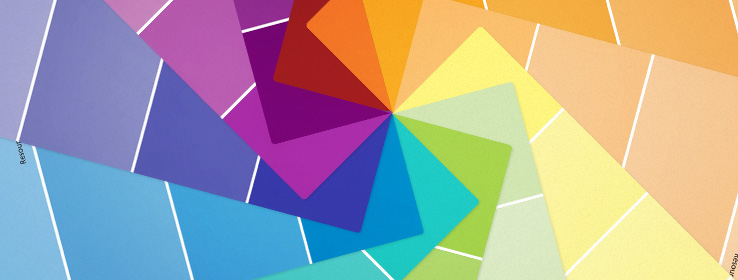Get an overview of the basic vocabulary of color, including terms such as hue, saturation, and value as well as the differences between analogous and complementary colors.
A basic color vocabulary includes the following terms:
Hue
Hue identifies the general family of a color, such as red, yellow, blue or green. The traditional color wheel is made up of twelve color families: red, red-orange, orange, yellow-range, yellow, yellow-green, green, blue-green, blue, blue-violet, violet, and red-violet.
Color Wheel
Colors on the opposite side of the wheel from each other are called complementary colors. In combination, these create striking contrasts. For less contrast, choose colors next to each other on the color wheel, which are called analogous colors. Choosing colors of different tints within one color family creates a monochromatic color scheme.
Warm or Cool?
Different colors in the same family may be described as being "warm" or "cool." Colors with yellow undertones will seem warmer, while the same color with blue or red undertones will appear cool. Cool colors — blue, green, violet — invite relaxation and thought. Warm colors — red, orange, yellow — encourage conversation and play. Sherwin-Williams color experts suggest using both warm and cool colors in rooms where you desire balance and variety.
Value
Value describes how light or dark a specific color may be. On Sherwin-Williams color strips, lighter values are at the top, mid-tone value are in the middle and darker values are at the bottom. When you combine colors from a single color strip, you're creating a monochromatic color scheme — perfect for creating a sophisticated, spacious look in a single room.









